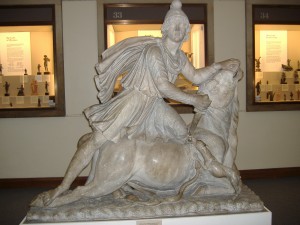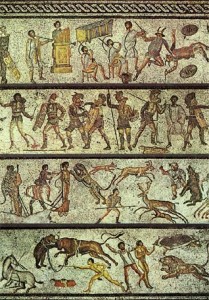Ancient World Now: Mithraism-Astronomy Behind the Worship
September 26th, 2010 — Gwen MinorClick here for direct link to audio Episode #16. 
Click here for previous episodes.
Twinkle, twinkle, little star….. Humans have gazed at the stars since the beginning of time. Have you ever wondered how the concept of the universe has changed over time? Babylonians, ancient Chinese, Greeks, Romans, Aztec cultures all had their own view of the universe. Mithraic iconography abounds in astronomical symbolism.
The Greco-Roman world was a geocentric world and the axis of the earth and the celestial sphere were thought to be stationary. But in 125 B.C., Hipparchus rocked the ancient world when he discovered the precession of the equinoxes.
On the right is a pocket globe from 1772. The inside lining of its hinged case details the constellations, including the latest discoveries of the time, Edmond Halley’s celestial maps of the southern hemisphere. To see this fabulous object “in person”, you have to visit the National Maritime Museum in London, England. And to see the Southern Cross, you have to travel to Antarctica, where my husband worked for many years. Check out David’s blog to get a
taste of “The Ice”!
And check out this week’s audio episode to find out how in tarnation all this relates to the ancient world!








